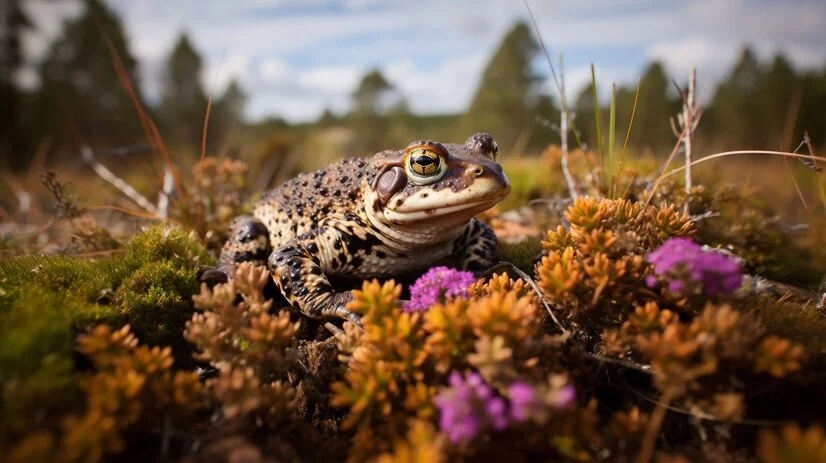Southeast Asia is home to some of the world’s most biodiverse oceans and fisheries. With its vast coral reefs, mangroves, and rich marine life, this region plays a critical role in global marine conservation. However, rapid development, overfishing, and climate change are putting immense pressure on these precious ecosystems. As a result, marine conservation has become an urgent priority for countries across Southeast Asia. In this article, we’ll explore the importance of marine conservation, the threats facing Southeast Asia’s oceans and fisheries, and the steps being taken to protect them.
1. Introduction to Marine Conservation in Southeast Asia
Marine conservation involves efforts to preserve and protect the marine environment and its resources. In Southeast Asia, these efforts are particularly crucial because the region is home to some of the world’s most ecologically important marine ecosystems. The Southeast Asian seas are not only rich in biodiversity but also provide food, income, and livelihoods for millions of people. Protecting these vital ecosystems ensures the health of the oceans and the sustainability of fisheries for future generations.
2. The Importance of Southeast Asia’s Oceans and Fisheries
The oceans of Southeast Asia are among the most productive and biodiverse on Earth. From the coral reefs of the Philippines to the mangrove forests of Indonesia, these ecosystems support a wide variety of marine life, including fish, sea turtles, and marine mammals. These waters are also home to some of the world’s largest fishing industries, which provide food and employment for millions.
Fisheries in Southeast Asia are a major source of protein for many people, especially in rural coastal communities. The region’s oceans also contribute significantly to the global economy, supporting industries such as tourism, shipping, and aquaculture. In short, the health of Southeast Asia’s oceans is vital not only to the region’s inhabitants but also to global sustainability.
3. Key Threats to Marine Ecosystems in Southeast Asia
Despite their importance, Southeast Asia’s oceans and fisheries face significant threats. Among the most pressing are:
- Overfishing: Unsustainable fishing practices have led to the depletion of fish stocks. Overfishing threatens biodiversity and the livelihoods of local communities that depend on fishing for survival.
- Coral Reef Destruction: Coral reefs, often referred to as the “rainforests of the sea,” are being destroyed by activities like illegal fishing, coastal development, and pollution. Coral reefs provide vital ecosystem services and are critical to marine food webs.
- Pollution: Plastics, chemicals, and untreated sewage are polluting the oceans, threatening marine life and coastal ecosystems. Southeast Asia is one of the world’s largest contributors to marine plastic pollution.
- Climate Change: Rising sea temperatures and ocean acidification caused by climate change are harming marine ecosystems. Coral reefs are especially vulnerable to bleaching, while shifting ocean conditions affect fish migration and spawning patterns.
4. Regional Efforts in Marine Conservation
Countries in Southeast Asia have recognized the need for collective action to protect the region’s oceans. Regional cooperation and partnerships are essential to tackle the shared challenges of marine conservation.
National Initiatives
Many Southeast Asian countries have implemented national policies and programs to conserve their marine environments. Indonesia, for example, has designated several Marine Protected Areas (MPAs) and has introduced policies to combat illegal, unreported, and unregulated (IUU) fishing. Similarly, the Philippines has expanded its network of MPAs and is investing in sustainable fisheries management.
Regional Partnerships
Regional cooperation has been critical in addressing marine conservation challenges. The Association of Southeast Asian Nations (ASEAN) has worked to coordinate efforts across countries, sharing knowledge, resources, and best practices for marine conservation. ASEAN has also adopted frameworks to combat IUU fishing and promote sustainable fisheries management.
5. Sustainable Fishing Practices in Southeast Asia
Sustainable fishing is crucial to the long-term health of Southeast Asia’s oceans. This includes practices like reducing bycatch, protecting fish spawning grounds, and using eco-friendly fishing gear. Many countries in the region are adopting sustainable fishing regulations, such as banning harmful fishing methods like blast fishing and trawling.
One example of sustainable fishing is the use of “community-managed marine areas” (CMMAs), where local communities are directly involved in managing and protecting fisheries. These areas have shown great success in improving fish stocks and providing sustainable livelihoods for coastal communities.
6. Marine Protected Areas (MPAs) in Southeast Asia
Marine Protected Areas (MPAs) are a key tool in marine conservation. These designated zones restrict harmful human activities to protect marine ecosystems and promote biodiversity. Southeast Asia has an extensive network of MPAs, including some of the most famous marine reserves in the world, such as the Tubbataha Reefs Natural Park in the Philippines and the Raja Ampat Islands in Indonesia.
MPAs help restore fish populations, protect endangered species, and provide safe spaces for marine life to thrive. However, enforcement remains a challenge in many areas, with illegal fishing and encroachment still common problems.
7. The Role of Technology and Innovation in Marine Conservation
Technology is playing an increasingly important role in marine conservation. Innovations in satellite tracking, drones, and underwater monitoring systems are helping conservationists better understand marine ecosystems and enforce regulations. For example, satellite technology is being used to track illegal fishing vessels, while drones help monitor coral reefs and detect environmental threats.
Moreover, new technologies in sustainable fishing practices, such as biodegradable fishing gear and fish farming innovations, are helping to reduce the environmental impact of fishing activities.
8. Challenges in Marine Conservation in Southeast Asia
Despite the progress made, several challenges remain in protecting Southeast Asia’s oceans. These include:
- Illegal, Unreported, and Unregulated (IUU) Fishing: IUU fishing is a major problem in the region, undermining conservation efforts and depleting fish stocks. While many countries have introduced stricter regulations, enforcement remains weak in some areas.
- Climate Change: The effects of climate change, such as rising sea levels and ocean acidification, are creating new challenges for marine conservation. Southeast Asia’s coastal areas are particularly vulnerable to these changes, making adaptation and mitigation essential.
- Lack of Funding and Resources: While governments and NGOs are working hard to protect marine ecosystems, limited financial resources and capacity remain barriers to effective marine conservation.
9. Case Studies of Successful Marine Conservation Projects
Several successful marine conservation projects in Southeast Asia highlight the potential for positive change:
- The Tubbataha Reefs Natural Park (Philippines): Once severely threatened by illegal fishing, this UNESCO World Heritage Site is now a model of marine protection, with thriving coral reefs and abundant marine life.
- Raja Ampat (Indonesia): Known for its unparalleled biodiversity, Raja Ampat has implemented a variety of marine conservation initiatives, including community-based management and eco-tourism, helping to protect its coral reefs and marine species.
10. The Future of Marine Conservation in Southeast Asia
The future of marine conservation in Southeast Asia hinges on continued collaboration between governments, NGOs, local communities, and the private sector. As global awareness of the importance of oceans grows, there is hope for increased funding, innovation, and support for marine conservation initiatives.
Adopting sustainable fishing practices, expanding MPAs, and addressing the impacts of climate change will be crucial in ensuring the long-term health of Southeast Asia’s oceans and fisheries. Regional cooperation and technological advancements will also play a critical role in overcoming existing challenges.
11. Conclusion: The Need for Continued Protection and Action
Marine conservation in Southeast Asia is more important than ever. The region’s oceans and fisheries are vital to both the local economy and global biodiversity. While significant challenges remain, the efforts of governments, local communities, and conservation organizations are making a real difference. By continuing to invest in marine protection, promote sustainable fishing practices, and address environmental threats, Southeast Asia can lead the way in protecting its vital oceans for future generations.
SEO Components for the Keyword: “Marine Conservation in Southeast Asia: Protecting the Region’s Vital Oceans and Fisheries”
- Permalink: /marine-conservation-southeast-asia-oceans-fisheries
- Meta Description: Marine conservation in Southeast Asia is essential for protecting vital oceans and fisheries. Learn how the region is addressing threats and promoting sustainable practices for a healthier future.
- Alt Text Description: Marine conservation efforts in Southeast Asia aim to protect the region’s oceans and fisheries. Discover how sustainable practices are being implemented to ensure long-term environmental health.
- Category: Environment, News, Sustainability
- Featured Image: (Image showing vibrant coral reefs, marine life, or fishermen in Southeast Asia with ocean background)
- SEO-Friendly Title Tag: Marine Conservation in Southeast Asia: Protecting Oceans & Fisheries


